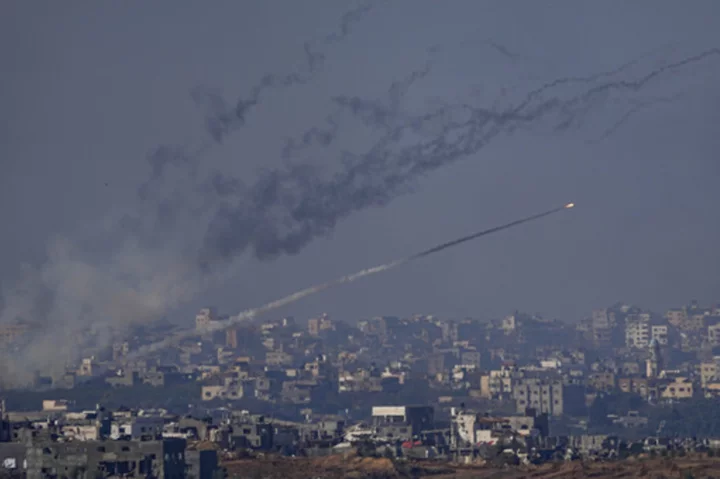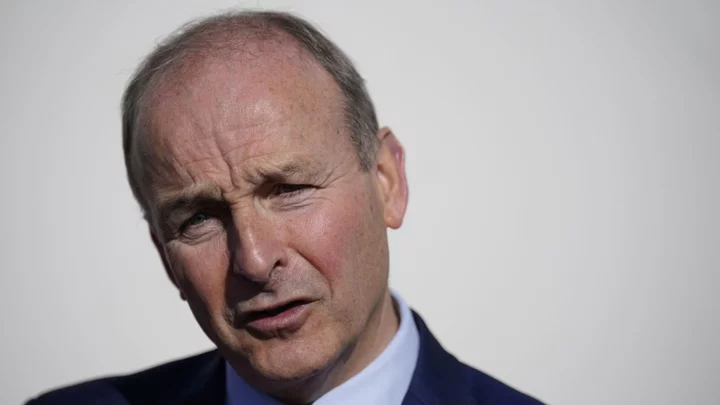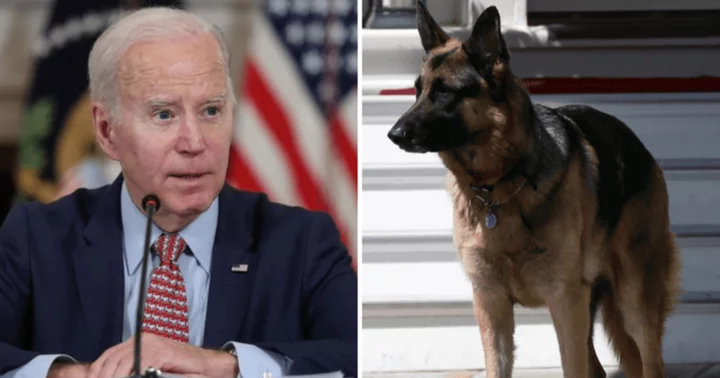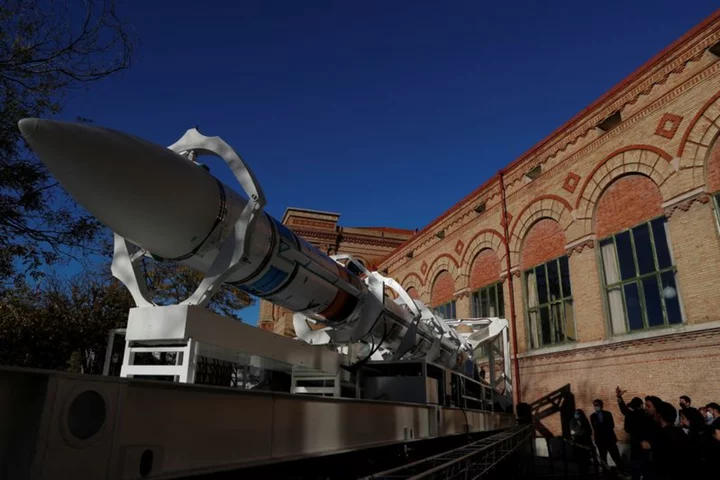KHAN YOUNIS, Gaza Strip (AP) — Israel pounded targets in the southern Gaza Strip on Saturday, intensifying a renewed offensive that followed a weeklong truce with Hamas and giving rise to renewed concerns about civilian casualties.
At least 178 Palestinians have been killed since the fighting resumed Friday morning, even as the United States urged ally Israel to do everything possible to protect civilians.
“This is going to be very important going forward," Secretary of State Antony Blinken said Friday after meetings with Arab foreign ministers in Dubai, wrapping up his third Middle East tour since the war started. "It’s something we’re going to be looking at very closely.”
Israel's attacks Saturday were focused on the Khan Younis area in southern Gaza, where the military dropped leaflets the day before warning residents to leave.
As of late Friday, however, there had been no reports of large numbers of people leaving, according to the United Nations.
“There is no place to go,” lamented Emad Hajar, who fled with his wife and three children from the northern town of Beit Lahia a month ago to seek refuge in Khan Younis.
“They expelled us from the north, and now they are pushing us to leave the south.”
Some 2 million people — almost Gaza's entire population — are crammed into the territory’s south, where Israel urged people to relocate at the war’s start and has since vowed to extend its ground assault. Unable to go into north Gaza or neighboring Egypt, their only escape is to move around within the 220-square-kilometer (85-square-mile) area.
In response to U.S. calls to protect civilians, the Israeli military released an online map, but it has done more to confuse than to help.
It divides the Gaza Strip into hundreds of numbered, haphazardly drawn parcels, sometimes across roads or blocks, and asks residents to learn the number of their location in case of an eventual evacuation.
“The publication does not specify where people should evacuate to,” the U.N. office for coordinating humanitarian issues in the Palestinian territory noted in its daily report. “It is unclear how those residing in Gaza would access the map without electricity and amid recurrent telecommunications cuts.”
Egypt has expressed concerns the renewed offensive could cause Palestinians to try and cross into its territory. In a statement late Friday, the Egyptian Foreign Ministry said the forced transfer of Palestinians “is a red line."
U.S. Vice President Kamala Harris, who was in Dubai on Saturday for the COP28 climate conference, was expected to outline proposals with regional leaders to “put Palestinian voices at the center” of planning the next steps for the Gaza Strip after the conflict, according to the White House. U.S. President Joe Biden's administration has been emphasizing the need for an eventual two-state solution, with Israel and a Palestinian state coexisting.
The renewed hostilities have also heightened concerns for 136 hostages who, according to the Israeli military, are still held captive by Hamas and other militants after 105 were freed during the truce. For families of remaining hostages, the truce’s collapse was a blow to hopes their loved ones could be the next out after days of seeing others freed. The Israeli army said Friday it had confirmed the deaths of four more hostages, bringing the total known dead to seven.
During the truce, Israel freed 240 Palestinians from its prisons. Most of those released from both sides were women and children.
The war began after the Oct. 7 attack by Hamas and other militants, who killed about 1,200 people, mostly civilians, in southern Israel and took around 240 people captive.
After the end of the truce, militants in Gaza resumed firing rockets into Israel, and fighting broke out between Israel and Hezbollah militants operating along its northern border with Lebanon.
HUMANITARIAN AID HALTHundreds of thousands of people fled northern Gaza to Khan Younis and other parts of the south earlier in the war, part of an extraordinary mass exodus that has left three-quarters of the population displaced and facing widespread shortages of food, water and other supplies.
Since the resumption of hostilities, no aid convoys or fuel deliveries have entered Gaza, and humanitarian operations within Gaza have largely halted, according to the U.N.
The International Rescue Committee, an aid group operating in Gaza, warned the return of fighting will “wipe out even the minimal relief” provided by the truce and “prove catastrophic for Palestinian civilians.”
Up until the truce began, more than 13,300 Palestinians were killed in Israel’s assault, roughly two-thirds of them women and minors, according to the Health Ministry in Hamas-controlled Gaza, which does not differentiate between civilians and combatants.
The toll is likely much higher, as officials have only sporadically updated the count since Nov. 11. The ministry says thousands more people are feared dead under the rubble.
Israel says it is targeting Hamas operatives and blames civilian casualties on the militants, accusing them of operating in residential neighborhoods. Israel says 77 of its soldiers have been killed in the ground offensive in northern Gaza. It claims to have killed thousands of militants, without providing evidence.
___
Magdy reported from Cairo, Rising from Bangkok.
___
Full AP coverage at https://apnews.com/hub/israel-hamas-war









